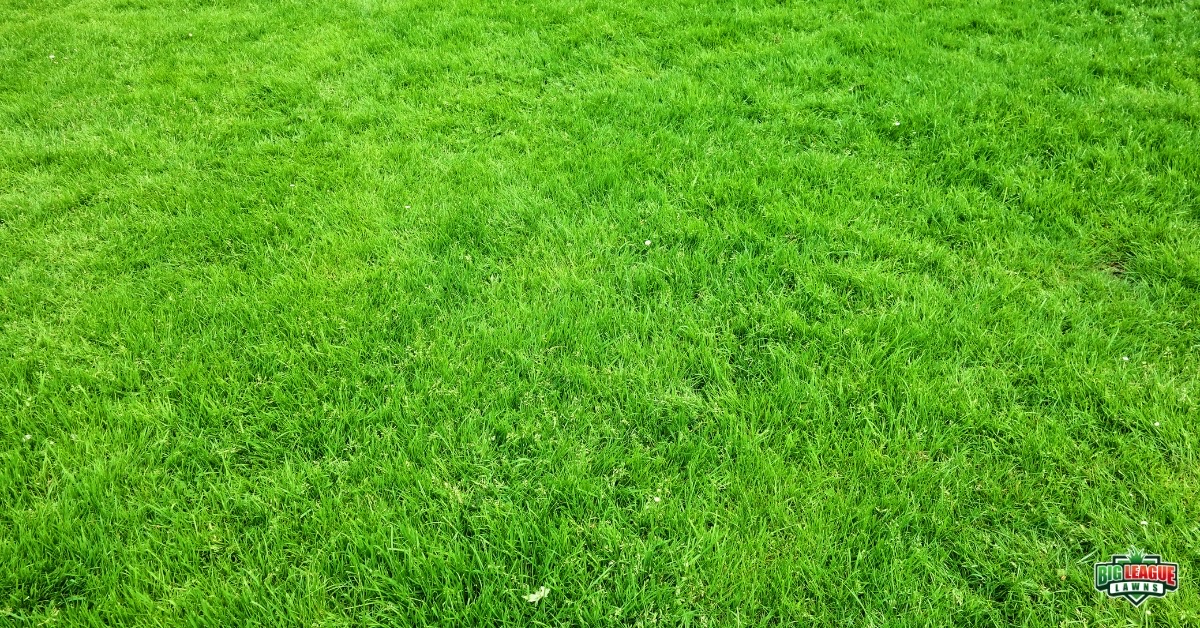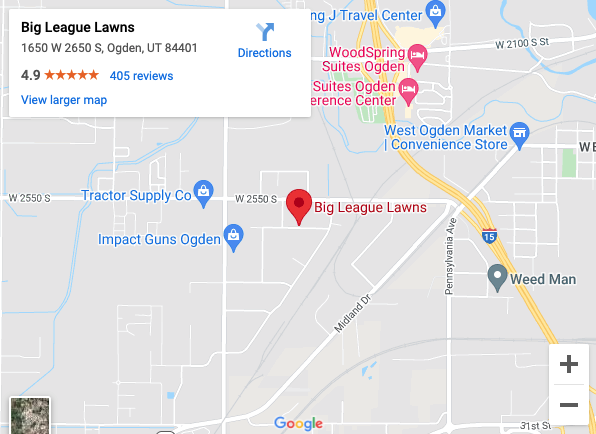Congratulations! You’re a new Utah homeowner, and you’re now caring for your own lawn. You’re going to make the most of the opportunity, of course, as you do everything in life. Your vision for your new lawn is, naturally, a thick, lush green expanse of beautiful turf grass that will delight your family, friends, and neighbors. Your yard will be the perfect place to relax at the end of the day and a favorite weekend barbeque place for everyone you know. That’s the plan. Now it’s time to start your basic Utah lawn care regimen and make the yard of your dreams a reality.
The 7 Basics of Successful Lawn Care
As you’ve already learned, whatever you want to accomplish requires a goal and a plan with steps that lead to it as simply and efficiently as possible to produce high-quality, lasting results. Use these basic lawn growing tips to realize your vision for growing the ideal Utah lawn:
Improve your soil health
For a healthy lawn, you need healthy soil. You can test your soil to determine the essentials. Take samples of the best areas of the existing yard, plus samples of bare spots and other trouble spots. Send your samples to your local agricultural lab, probably available through your county government for analysis and recommendations on how to help grass grow. Soil amendments may be needed. For example, if needed, add nitrogen, potassium, or other nutrients, or balance the soil pH by adding lime or aerating compacted soil.
Learn which turf grasses are best for your specific location
Grass species thrive best in the climate zone to which they’re adapted. Their drought tolerances, performance in the shade, and various other growing conditions vary from one turf type to another. Planting seeds, vs. sod, multiplies your options of grass species and the features of grass you can choose. For example, you can prioritize texture, darker or lighter shades of green, durability, etc. Choosing lawn grass types best for Utah and your elevation will need less watering, maintenance, and other resources to flourish.
Seed the lawn properly
Correct timing is essential when seeding new lawn areas, working to increase the thickness of your existing grass, or overseeding your entire lawn. Schedule your grass seeding in the ideal period for seasonal growing. For a sustainable lawn with the best resistance to disease, lawn grubs, other pests, and drought, buy high-quality turf grass seed. To learn how to maintain lawn grass, start by learning how to understand and use seed tag information and familiarize yourself with the producer of the seed you’re buying. To avoid a lot of typical mistakes that cause lawns to perform poorly, plant the seeds according to professional recommendations.
Fertilize the grass correctly
Naturally, proper nutrients are key to a healthy lawn. For example, nitrogen is a high priority for dense, rich green grass. Calculate the total number of pounds of nitrogen your grass will need each year for the amount of square footage in your yard. The estimated amount will be based on various factors. Read the fertilizer label to determine the amount of nitrogen and other nutrients it contains. Avoid fertilizing too frequently or overfeeding. Set a fertilizing schedule that is appropriate for your lawn, and don’t overdo it. Get professional advice as needed.
Manage to water correctly
Water your grass deeply vs. frequently. Watering too often is counterproductive to your goals. It promotes shallow root growth, which is vulnerable to stresses like Utah droughts, soil compaction from heavy foot traffic, and other challenges. Consider grass types that conserve water in order to reduce water use, save utility costs, and grow stronger grass that can withstand changes.
Mow your grass properly
For consistent results, use lawn mowing best practices. Establish your mowing schedule based on the rate of your grass growth, vs. just picking arbitrary weekdays or bi-monthly dates. Set the blade height on your mower to mow your grass at heights that are right for the turf type and that vary with the seasonal conditions. For example, Tall Fescue grass should be mowed at around 2 to 3 inches, whereas Bermuda grass should be at only around 1.5 inches. Leave all grass types a little taller in hot weather.
Prevent lawn weed growth
Weeds strive aggressively to crowd out healthy grass and steal critical water, nutrients, and sunlight. Learn to recognize common weeds in your area. Use the recommended methods to kill broadleaf weeds in ways that minimize the cost and work. Get expert help if needed to avoid excessively repeating weed control treatment. Use additional spot treatments to control the most tenacious yard weeds.
FAQs
How can I achieve a lush green lawn?
To achieve a lush green lawn, it’s crucial to focus on proper watering, mowing regularly, using the right fertilizer to feed your lawn, and dealing with lawn weeds and pests in a timely manner. The health of your lawn starts with the roots, so ensuring they have adequate water and nutrients is key.
What are some tips for maintaining a healthy and green lawn?
Regular mowing, watering in the early morning or late evening, and applying fertilizer periodically are all effective. Also, it’s important to perform a lawn soil test once a year to maintain the optimum balance of nutrients.
What are the best practices for watering a lawn to keep it green?
The best practice is to water deeply and infrequently to promote strong roots. Your lawn needs about 1-1.5 inches of water per week, either from rainfall or watering. Early morning is the best time to water to reduce evaporation.
Are there any specific fertilizers or nutrients that can help maintain a lush green lawn?
Nitrogen is the most important nutrient for promoting green grass. A lawn soil test can help you determine what nutrients your lawn needs.
How often should I mow my lawn to promote a lush and green appearance?
You should mow regularly, ideally once a week. However, the frequency can vary depending on the type of grass, time of year, and weather conditions.
Are there any specific grass types or seeds that are recommended for a lush green lawn?
The best grass type depends on your region’s climate, sun exposure, and the amount of foot traffic. Some popular options for lush lawns include Bermuda grass, Kentucky bluegrass, and St. Augustine grass.
What steps should I take to prevent weeds from invading and damaging my green lawn?
To prevent an invasion of lawn weeds, you could adopt strategies like maintaining healthy soil, mowing at the right height, watering correctly, and using pre-emergent herbicides for weeds like crabgrass.
Are there any natural or organic methods for achieving a lush green lawn without the use of chemicals?
Yes, using organic matter like compost can enrich the soil and provide nutrients. Also, natural lawn care practices such as proper mowing, watering, and aeration can keep your lawn healthy without chemicals.
How important is proper lawn aeration for maintaining a lush green appearance?
Lawn aeration is crucial as it ensures air circulation to the roots and helps water and nutrients penetrate the soil. It can also help to break up compacted soil and thatch, promoting a healthier lawn.
Are there any specific pests or diseases that I should be on the lookout for in order to maintain a green and healthy lawn?
Common lawn pests include grubs, armyworms, and chinch bugs. Diseases to look out for include brown patch, rust, and dollar spot. Preventative measures and prompt treatment can keep these pests and diseases from damaging your lawn.
Can you recommend any professional lawn care services or techniques for achieving a lush green lawn?
Professional lawn care services can offer comprehensive lawn care plans that include fertilizer application, pest control, aeration, and other services tailored to your lawn’s needs. Techniques like proper mowing and watering can also contribute to a lush lawn.
Are there any specific lawn care tools or equipment that are essential for maintaining a lush green lawn?
A good lawn mower is essential. Other useful tools include a rake for removing leaves and debris, a sprinkler or irrigation system for watering, and an aerator to improve air circulation in the soil.
What should I do to repair any patches or bare spots in my lawn and ensure a consistently lush green appearance?
For small patches, remove the dead grass, add topsoil, and then apply grass seed. Water the area regularly until the new grass establishes. For larger areas, you may need to consider lawn renovation or sod installation.
How can I effectively and efficiently remove leaves or debris from my lawn to maintain its green and healthy look?
Regular raking or using a lawn sweeper or leaf blower can help keep your lawn free of leaves and debris. Removing debris allows for better air circulation and sunlight penetration, promoting a healthier lawn.
Are there any seasonal or weather-related factors that I should consider when trying to achieve a lush green lawn?
Yes, every season has its own lawn care needs. In summer, lawns need more water due to heat and drought, while in autumn, it’s important to remove fallen leaves promptly. Winter lawn care may involve winterizing your lawn or protecting it from frost.
What are some common mistakes or pitfalls to avoid when trying to achieve a lush green lawn?
Overwatering, cutting the grass too short, and ignoring signs of pest or disease are common mistakes. Also, it’s important not to overlook the need for aeration and fertilization as part of your lawn care routine.
Are there any specific watering schedules or techniques that are recommended for promoting a lush and green lawn?
Water your lawn deeply but infrequently, ideally in the early morning. This encourages the roots to grow deeper and helps maintain lawn health during periods of low rainfall or drought.
Can you provide any DIY solutions or home remedies for dealing with common lawn care issues that may hinder a lush green appearance?
Regular aeration can help solve the problem of compacted soil. For small weed problems, hand pulling can be effective. Homemade compost or organic matter can be a great natural fertilizer to improve soil health.
How important is regular soil testing and analysis for maintaining a lush green lawn?
Soil testing is crucial as it helps you understand your soil’s pH and nutrient levels. This, in turn, can guide your fertilizer choices and help you address any nutrient deficiencies your lawn may have.
What are some long-term strategies or steps I can take to maintain a lush green lawn year after year?
Regular and proper watering, mowing, fertilization, and aeration are key. Managing lawn pests, weeds, and diseases promptly can also ensure your lawn remains lush and green year after year.
Facts about Tips For A Lush Green Thriving Lawn
- A lush green lawn adds beauty and value to your home.
- Proper watering is essential for a healthy lawn. Water deeply and infrequently to encourage deep root growth.
- Regular mowing at the correct height helps promote a dense and healthy lawn. Adjust the mower height based on the grass type.
- Fertilize your lawn regularly to provide essential nutrients. Choose a fertilizer that is appropriate for your grass type and follow the recommended application rates.
- Weed control is crucial to maintain a lush green lawn. Use herbicides or manual removal methods to keep weeds at bay.
- Aeration helps improve soil compaction and allows nutrients and water to reach the roots. Consider aerating your lawn once a year.
- Regular maintenance tasks like dethatching and overseeding can help rejuvenate your lawn and fill in bare spots.
When It’s Time for Expert Assistance
In some situations, it can be very difficult to overcome all the particular difficulties of some lawns and meet all the requirements to produce a thriving lawn without professional intervention. Big League lawn rehabilitation experts can evaluate your lawn and recommend periodic treatments that will achieve the results you want. We specialize in lawn care services designed to correct severe grass health problems! Our Big League remedial lawn solutions can transform your poorly performing grass to give you the most gorgeous lawn in your neighborhood.



